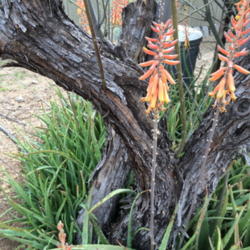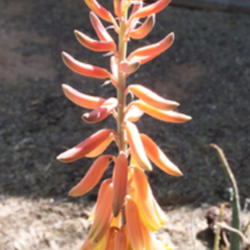| Plant Habit: | Cactus/Succulent |
| Life cycle: | Perennial |
| Sun Requirements: | Full Sun Full Sun to Partial Shade |
| Leaves: | Evergreen |
| Fruit: | Dehiscent |
| Flowers: | Showy |
| Flower Color: | Yellow Other: Orange-red |
| Bloom Size: | 1"-2" |
| Flower Time: | Winter |
| Inflorescence Height: | 3 feet |
| Suitable Locations: | Xeriscapic |
| Uses: | Provides winter interest Medicinal Herb Will Naturalize |
| Wildlife Attractant: | Hummingbirds |
| Resistances: | Drought tolerant |
| Propagation: Seeds: | Can handle transplanting Other info: Sow seeds in sandy soil. Seeds germinate in a few weeks at temperatures between 68 and 75 degrees F. Seedlings need moist but well-drained soil. |
| Propagation: Other methods: | Cuttings: Stem Offsets Other: Stems cut below a node root easily. Cut a stem that has gotten leggy, let it dry out for at least a few hours to form a seal on the cut surface. Place the cutting in rooting medium kept moist, but not wet, until roots form. |
| Pollinators: | Birds |
| Containers: | Suitable in 1 gallon Suitable in 3 gallon or larger Needs excellent drainage in pots |
| Miscellaneous: | Tolerates poor soil With thorns/spines/prickles/teeth |


« Add a new plant to the database
» Search the Aloes Database: by characteristics or by cultivar name
« See the general plant entry for Aloes (Aloe)